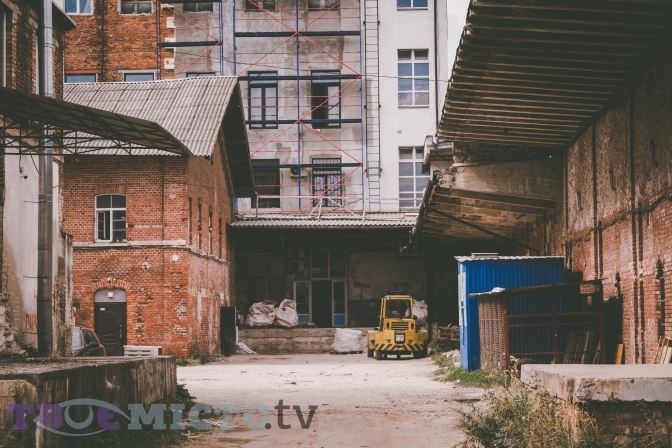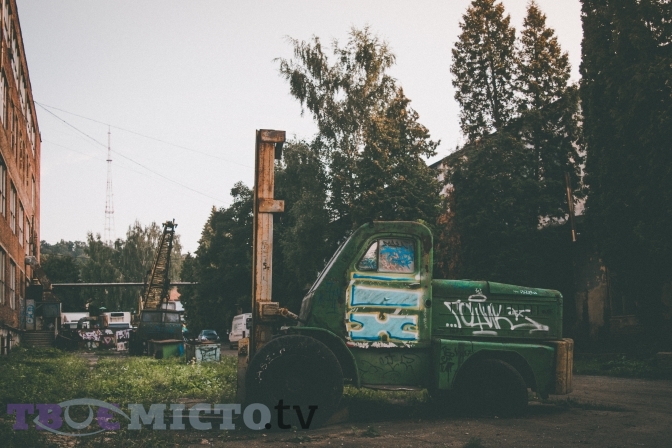
Photo: Volodymyr Karaim
A historian Andrii Bondarenko in his research of the Pidzamche’s industrial history, calls this district a «non-format» industrial area within the Soviet industry.
«Here, the ‘urban web’ was already formed, and its renovation demanded much resources and effort. From the socialist authorities’ point of view, the food and light industries, which were traditional for Pidzamche, took second and third place in Lviv’s industrial orientation. In the first place, there were mechanical engineering together with instrument-making, radio-electronic and electrotechnical branches of production, which, with few exceptions, developed in other, more spacy districts», – Andrii Bondarenko writes.
Not too cumbersome and quite old industry of Pidzamche retained its nature during the period of Soviet modernisation. Therefore, all Soviet enterprises in the district became the actual continuation of traditions that had developed since the century’s beginning, without any ambitious projects and landscape changes.
Crisis trends of the 90s transferred numerous enterprises into a new reality. A large number of plants in Lviv started to decay at that time. Giant enterprises became «dead» spots on the city map.
However, the enterprises of Pidzamche had several essential differences. First of all, the food and light industries were located here, which doesn’t lose its demand almost at any conditions. The second specificity is that the decayed plants’ areas emerged in direct proximity to the city centre, which influenced their further development as well.
REMA – «hipsters» on the production area
The plant of radio-electrical medical equipment (REMA) was founded in 1944 on the basis of three workshops that existed here in the interwar years. The main enterprise area occupied the space between Zavodska, Zhovkivska, Dashkevycha, Tkatska and Boryslavska streets (the last one became a part of the neighbouring «Svitoch» factory in the middle of the 90s). Until 1960, the plant specialised in producing disinfection and medical equipment. Since the beginning of the 60s, its workers started developing electrical medical devices, and in 1965, a separate construction-technological bureau emerged on the plant’s basis. In 1970, the bureau was transformed into an «All-Union scientifical research and construction institute REMA».
At the end of the 90s, the enterprise endured a crisis, which had impacted the whole Ukrainian economy. At the beginning of the 2000s, the plant announced bankruptcy. In 2006, in the interview for one of the Lviv editions, the chairman of the board of the «Lviv plant of radio-electrical medical equipment» Volodymyr Starichek said that at that moment, 167 people belonged to the plant’s staff. The lull lasted until 2015. Then, the plant announced the beginning of its revitalisation, and the creative space «ReZavod» was opened on its territory.
Read also: ART-COLONIZATION OF A FACTORY. HOW REZAVOD COMMUNITY IS TRANSFORMING AN INDUSTRIAL AREA IN LVIV
The only remains which remind about the strict mode of technological production are pieces of barbed wire on the bent fences and a humble checkpoint with the barrier for cars. The first images which catch the eye of everybody visiting the former plant’s territory are murals and graffiti. They are painted on almost every wall and even on the old plant’s equipment. Here, an improvised street gallery functions now, where the artists can embody their ideas.
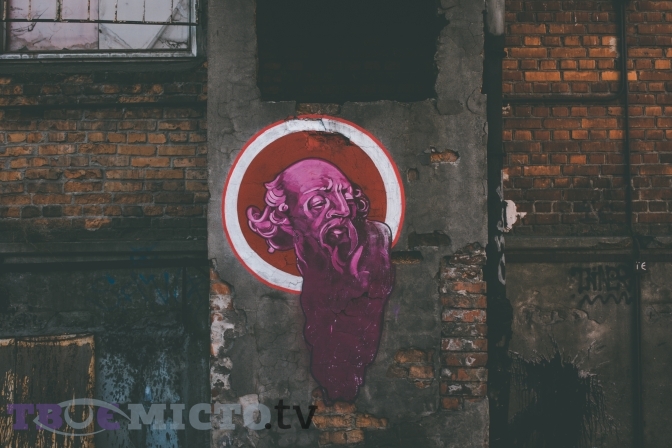
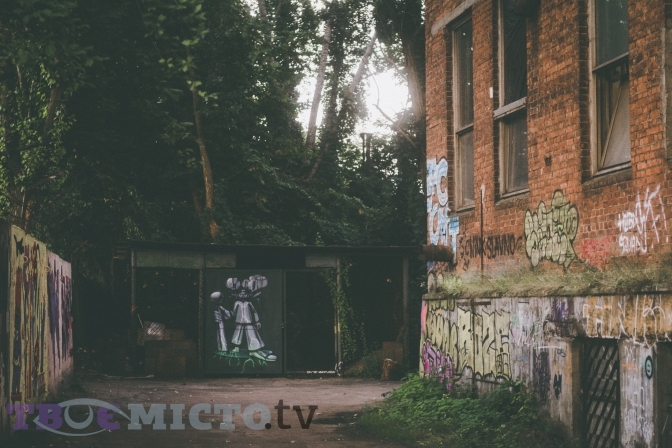
The plant’s territory is surrounded by diverse constructions: the facets of neighbouring houses peer from behind the rusty workshops, as the plant itself, in particular, lies among the living quarters. One-floor plant’s premises visually prolong the line of the adjacent Tkatska street. These buildings, constructed at the beginning of the XX century, became the territory of the plant when it expanded in the post-war years. On the top of one building, traditionally for Lviv, niches for the figures of the saints remained in the walls.
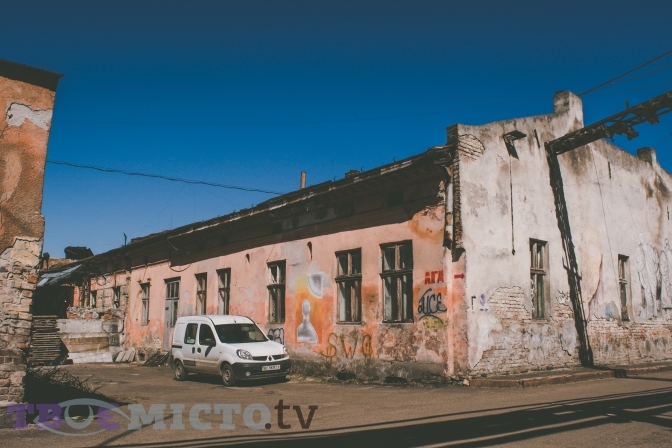
The building made of red bricks is catching visitor’s attention and is clearly seen from Zhovkivska street. This was one of the main production buildings.
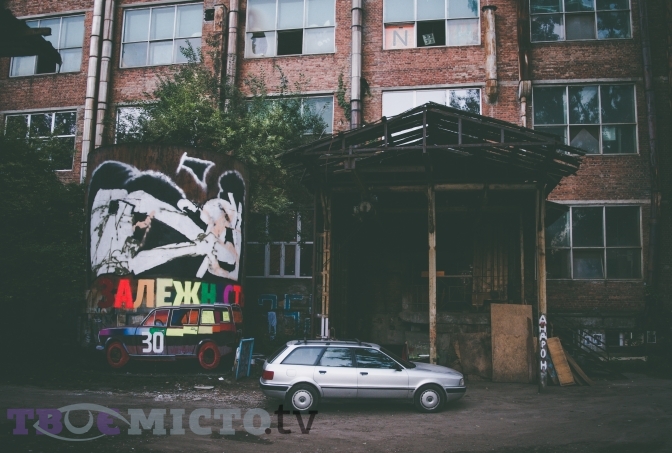
The building’s entrance is covered with advertisements and posters. The dark corridor inside initially reminds horror film decorations, but this feeling immediately disappears, as there’s quite crowdy here even on Friday evening. All because now, different studios, creative circles and other initiatives are located on every building floor. The top of the former workshop can be reached by stairs or an elevator.
The walls between the floors are ornamented with a black-and-white mosaic with an enterprise’s logo. On one of the floors, offices and studios share the space with large rooms, where old plant’s equipment is compactly stored, covered with a substantial layer of dust.
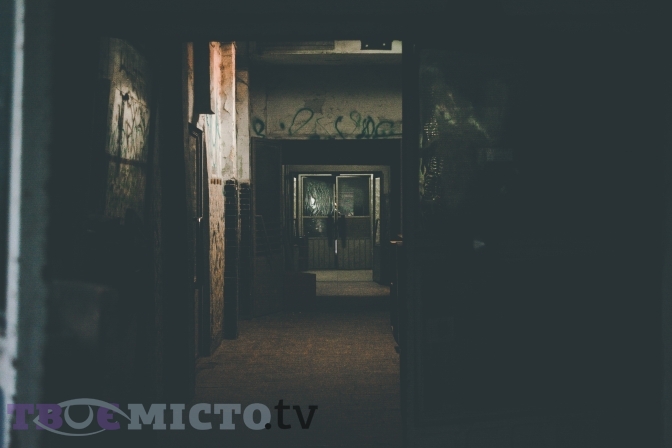
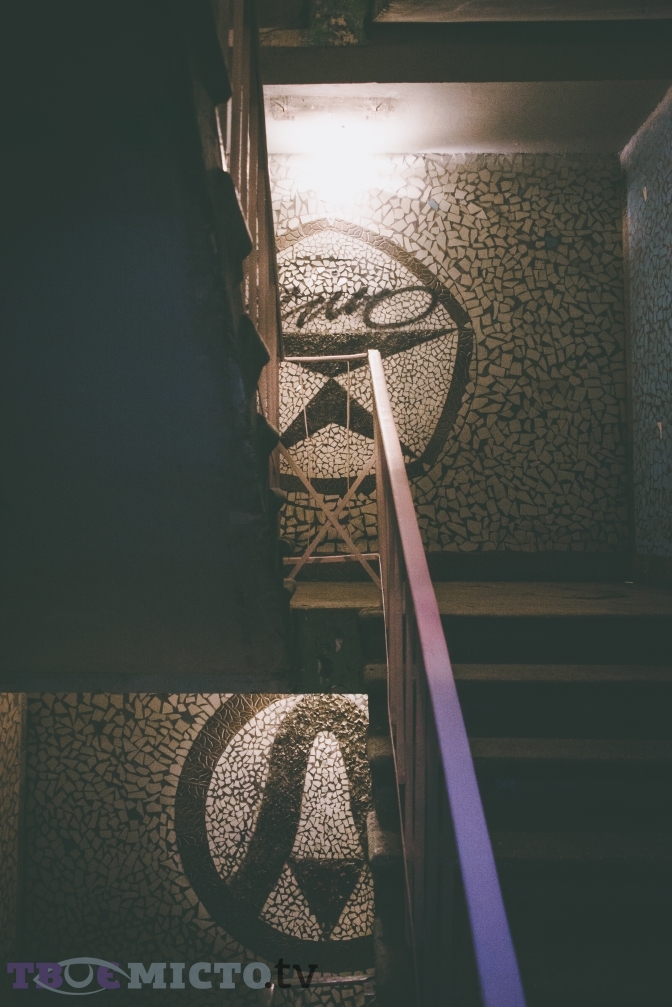
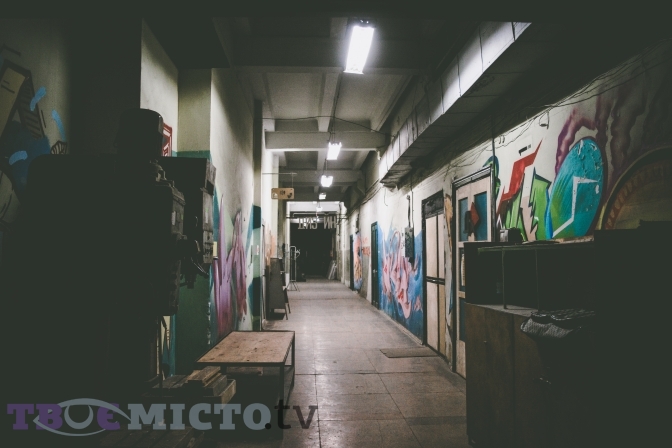
On the opposite side of the territory, there’s another plant building. It can be entered from Zavodska street. This building has an entirely different appearance and qualitatively differs from the production workshop. It’s not by chance, as at the time of plant’s functioning, its administrative part with managers’ and accounting offices was located here. There was a dining room in this place as well, now reminded by the remaining curious metal parapets and wickets with abstract images of kitchen utensils made of bent metal.
Comparing to the previous building, this one experienced more recent «invasions» and reconstruction, inside as well as external. There, numerous studios, an improvisation workshop, fitness studio, photo school are located. Until the quarantine was established in 2020, experimental theatre «Hershom» functioned here too.
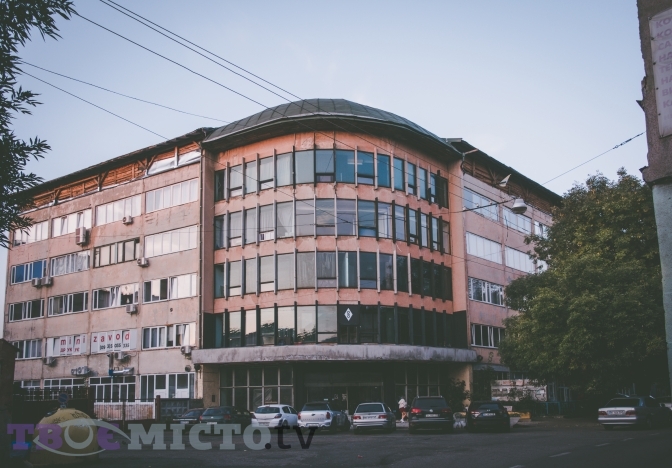
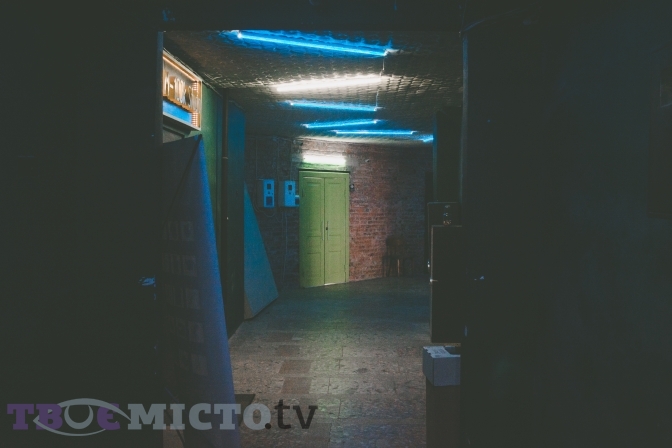
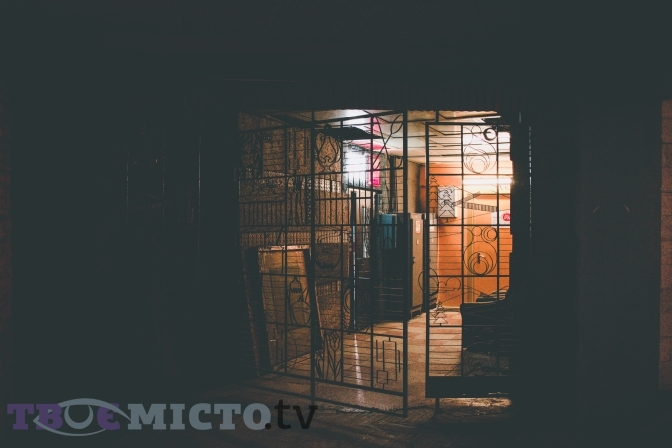
In the daytime, it’s quite crowded on the REMA territory. The sounds of equipment and hammer crashes are heard from the small buildings in the area. Here, the car repair, stone processing, equipment repair and carpentry workshops are functioning. Also, among the workshops, there’s a social enterprise «GreenBox» (Zelena Korobka) which specialises in gathering and sorting the household wastes like plastic, metal, etc.
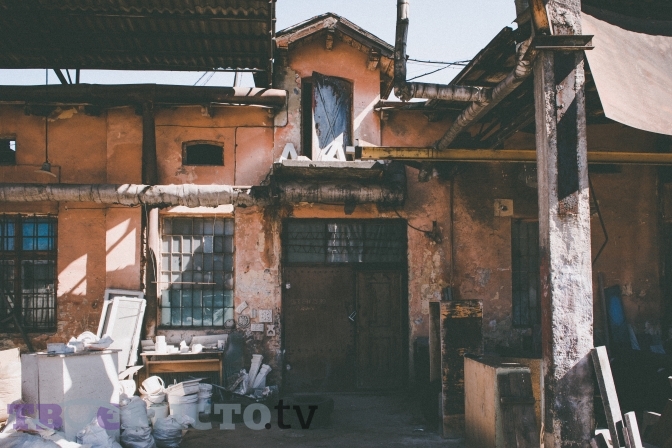
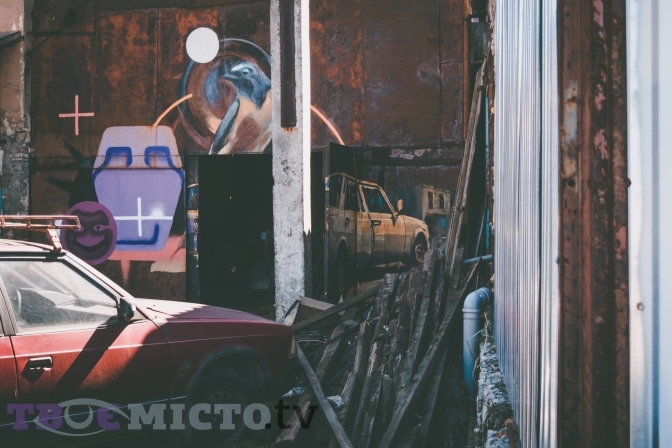
However, the life on the plant doesn’t die away even in the evening. The backshift starts here closer to the nightfall – music replaces the sounds of equipment then, and the territory becomes crowdy again. All because except workshops and studios, several entertainment establishments function here outdoors.
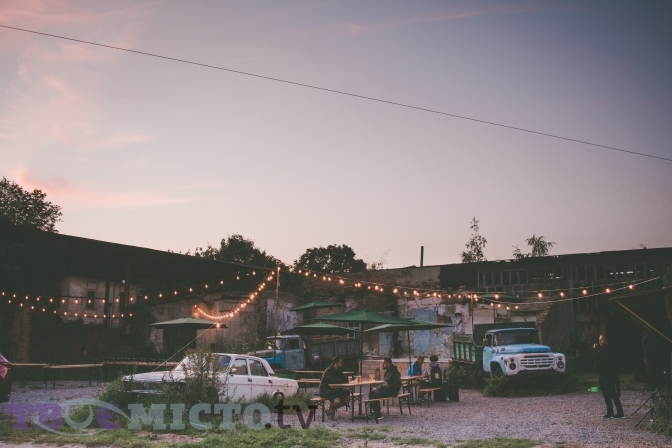
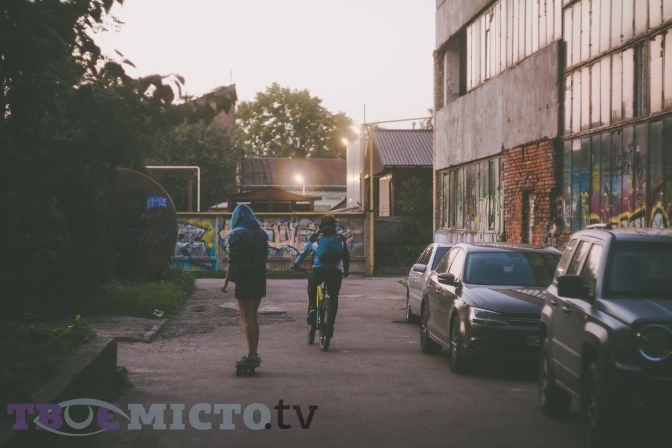
«New cutting». The end of meat history
Unlike the REMA plant, formed in the post-war times, «New cutting» was created primarily as an enterprise specialising in the processing of stockbreeding production, in particular meat. The new slaughterhouse was opened in 1901, though small premises for keeping livestock had been located here since the 1870s. The campuses of the newly created enterprise were constructed by the firm of a famous Lviv architect Ivan Levynskyi. In general, as of the beginning of the XX century, the enterprise had at its disposal nearly 40 premises for different purposes. Before World War II, some buildings of the enterprise were reconstructed and modernised, so after the Soviet power was decisively established in Lviv, the enterprise continued its work.
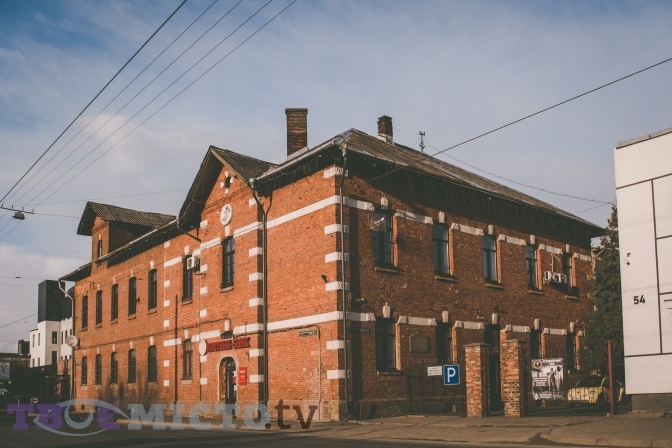
The fact that «New cutting» (or former meat processing plant) is living a new life is noticeable from Promyslova street. A range of posters, which densely cover the facades of the plant’s premises, directly hints that the area has long ago changed its focus according to the new demands.
Almost every minute, vehicles arrive here, big trucks in particular. Nowadays, the shopping and office centre «Promyslovyi» (Industrial) functions here. The meat processing past is only reminded by the sculptures of the caw head shapes, which decorate the facades of the former plant’s premises.
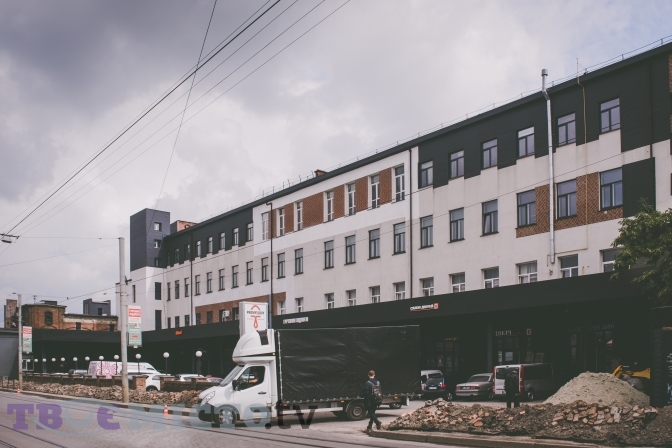
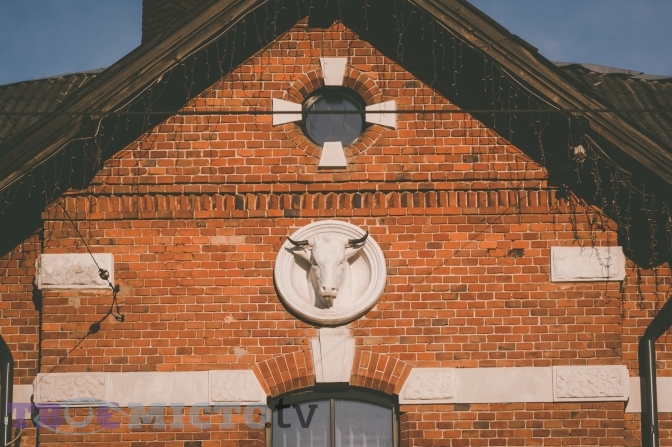
The area is quite spacy, though it’s usually densely filled with vehicles on the weekdays. Commerce is practiced here almost in every building: starting from the wholesale of dishes and socks to the shops with electrical devices. There’s also a cafe called «Mu-mu», which also reminds about the previous fate of these premises. A bit further, inside of the area, the number of shops declines, and ramps for loading and unloading of trucks appear.
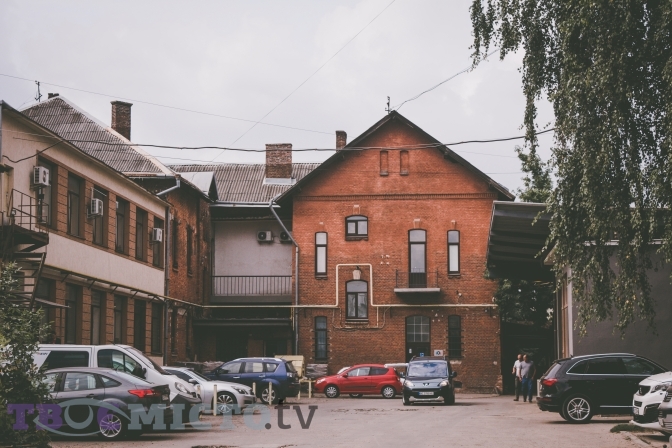
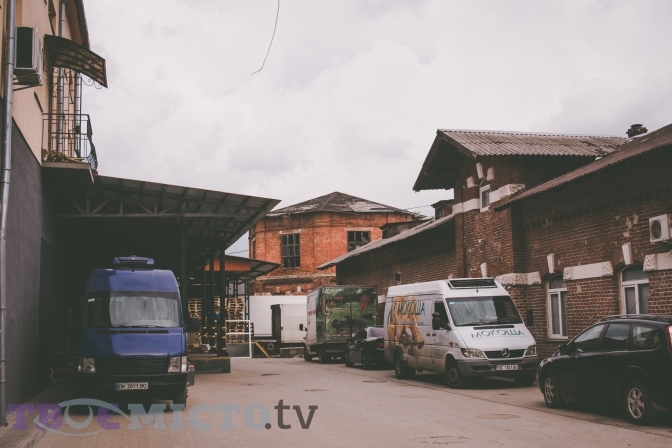
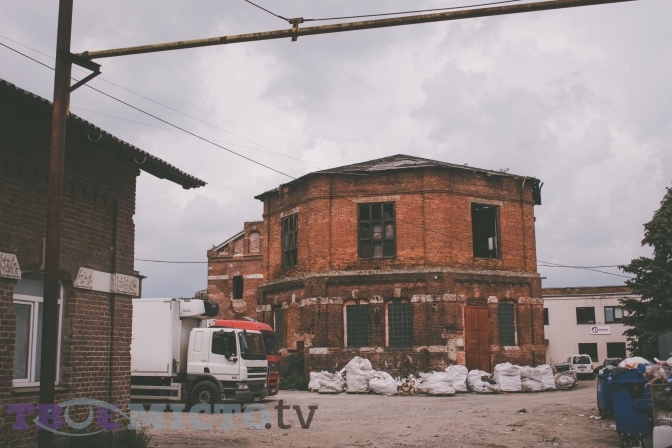
The buildings of the old slaughterhouse experienced almost no essential external reconstruction. Of course, they are noticeably marked by the years of exploitation, but they can still be easily recognised by the specific masonry of already tarnished red brick. Such a unique «design code» at the end of the XIX century was inherent to the whole industrial architecture of Lviv.
However, probably the most external changes were made to the biggest building of the meat processing plant, constructed yet during the Soviet times. The building remains in the state of reconstruction for several years and gradually changes its appearance.
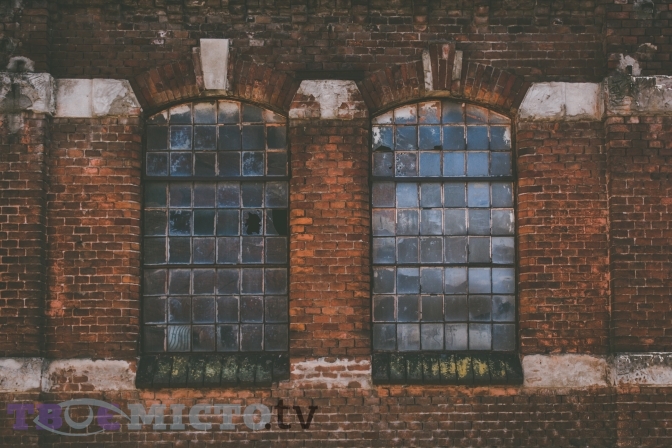
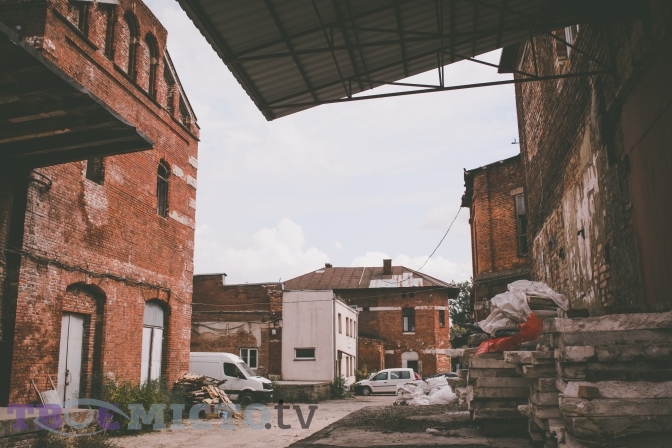
The silent manufacturing reality of «Progress»
«Progress» factory was founded in 1961. It consisted of the main factory itself, located in Lviv on Zhovkivska street, and the affiliate enterprise in Stryi, Boryslav, Terebovlia and Lutsk.
Lviv factory specialised in sewing the most complicated details of the footwear, pouring the soles, so the enterprise had the elements of chemical production. Also, manufacturing of the specific details and fittings for shoe production, as well as the reparation of related equipment took place here.
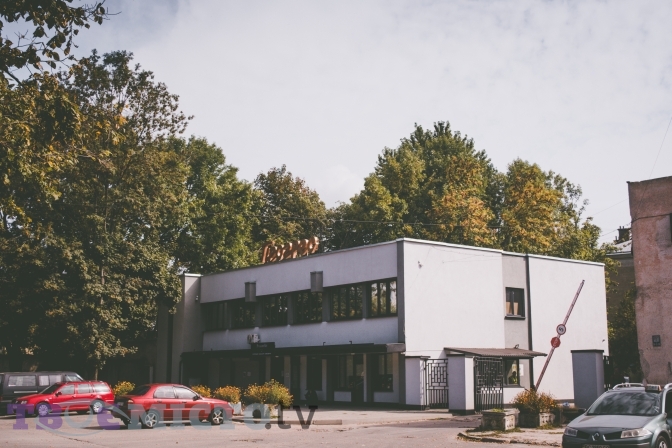
The area of the «Progress» factory lies inside the massive cluster of Pidzamche enterprises. On the one side, it borders the enterprise «Svitanok» (Dawn), which has a leather processing profile. On the other side, its neighbour is the enterprise «Mayak» (Lighthouse), also specialising in sewing clothes. Nowadays, it’s possible to enter the factory’s area from Zhovkivska street, where its main checkpoint is located. The building with «Прогрес» (Progress) signboard recently endured a reparation, which indicates that the area isn’t decaying.
At the checkpoint, guards meet those who want to enter the territory of «Progress». Today, it’s not as easy to come there as in the cases of REMA or the former meat processing plant because the access here is restricted.
«Now, about fifty firms of different profiles are located here, there’s also an advertising agency. There are shoe sewing firms. We let through only those who work here or visitors to a specific enterprise. It’s prohibited to merely walk here», – says the guard.
The volume of shoe production on the plant decreased significantly, but it still continues to function, its staff counts about a hundred workers nowadays. Except for shoe manufacturing, a firm «NMF Ukraine» is located on the plant’s territory, producing specific types of clothes, including the elements of military uniform.
However, if you managed to enter the area for business purposes or merely walking, the first thing catching your eye will be a bright mosaic laid out on the galleries between the two buildings of the plant.
One of these constructions was painted in a pretty poisonous blue shade after the repair, others almost retained their original appearances.
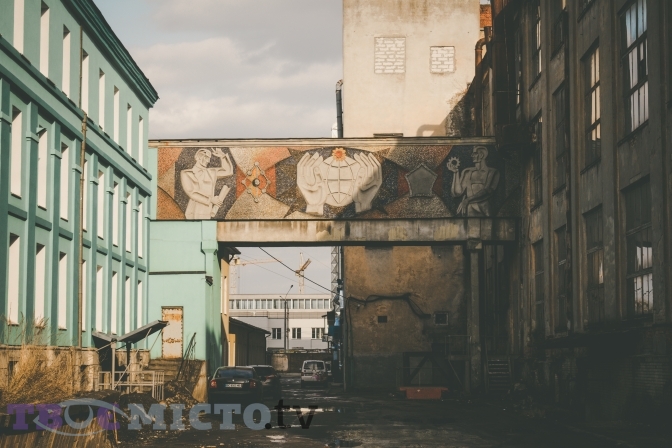
«Almazinstrument». From numerous types of vodka to a new district
Bohdana Khmelnytskoho, 116 street. This address preserves the history of more than one enterprise. For many locals, a distinct building with two lions near the gates and the date 1782 under the roof is directly associated with the plant «Almazinstrument» (Diamond tool). It’s this signboard that long hanged over the gates.
The plant itself was founded here by the Soviet administration during the post-war years and specialised in producing artificial diamonds designed to create cutting tools.
However, the manufacturing history on this territory dates back to the beginning of the XIX century. Then, Mayer Bachles (later – Bachevskyi) transfers his liquor-vodka factory to this place. The main factory buildings, later included in «Almazinstrument», were constructed in 1908.
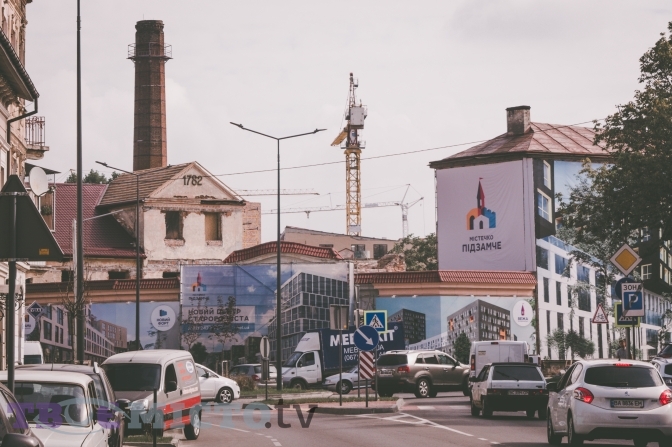
Until the middle 2000s, the pace and scale of production decreased significantly. The plant’s territory was leased to numerous firms, and in one of the premises, a special instruments shop was located. In 2019, the «RIEL» building corporation purchased the plant’s area, aiming to build living infrastructure, a shopping and entertainment centre and a kindergarten.
The fate of «Almazinstrument» somehow differs from the vectors of existence which mark the development of other areas in Pidzamche. Now, the oldest part of the former Bachevskykh factory is hugged by the scaffolding. The company that purchased this are obliged to preserve the most valuable constructions on the territory. In particular, the restoration of lion sculptures that decorated the factory’s entrance takes place nowadays.
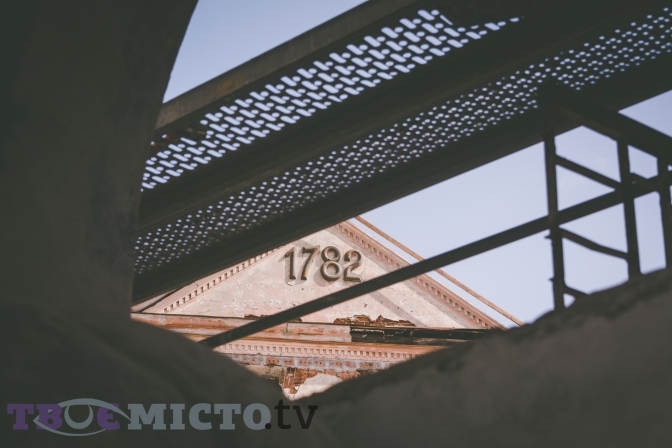
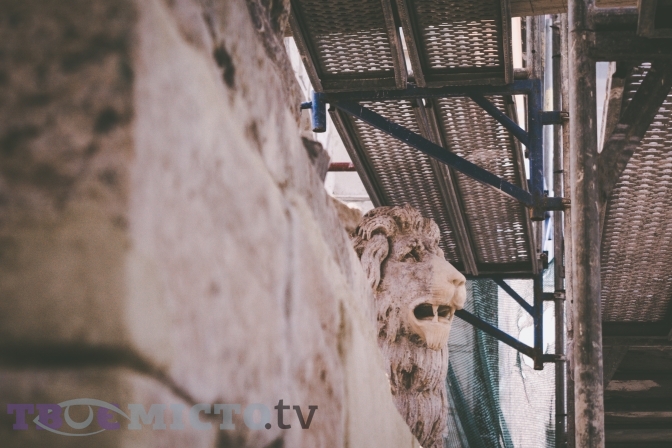
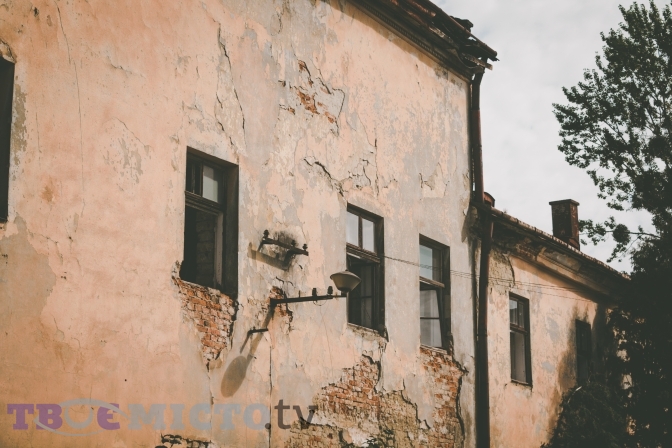
Nevertheless, nothing reminds of the Soviet premises of «Almazinstrument», which neighboured Novoznesenska street. Beyond the dense row of trees, the newly constructed buildings of the future housing complex «Mistechko Pidzamche» have already managed to grow.
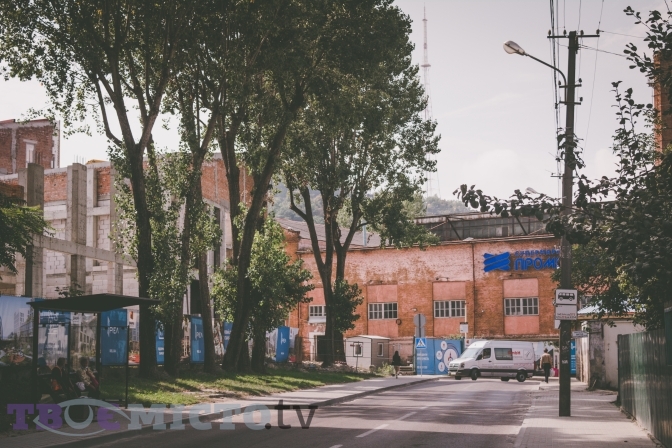
Still the industrial Pidzamche?
Although some big industrial areas and enterprises of Pidzamche try to adapt to the new conditions, having departed from their production profile for some reason, some endured all the economic hurricanes and prolonged their existence.
«I am extremely upset that ‘Almazinstrument’ has stopped its manufacturing. Regardless of anything, in the Pidzamche district, we still have many great enterprises that managed to preserve their production process. There is a pretty famous ‘Svitoch’ factory [producing a local brand of chocolate – ed.] where now, about a thousand workers are engaged, and this is definitely positive for the city economy» – a deputy of the Lviv City Council and advisor to the mayor Victoria Dovzhyk pointed out.
Except for «Svitoch», which belongs to the food industry, a pharmaceutical enterprise «Halychfarm», functions in the district, where more than a thousand people work. Nearby, on Korduby and Bohdana Khmelnytskoho streets, there are two enterprises specialising in making liquor-vodka products. These are «Lviv liquor-vodka plant» and plant «Hetman».
Technological manufacturing is preserved in Pidzamche as well. It’s represented by the «Lviv radio-repair plant» on Zhovkivska street. Today, this enterprise fulfils the Defence Ministry’s order and constructs radars and other important devices, which are used on the frontline in the war against Russia.
Generally, in the Pidzamche district, Viktoria Dovzhyk reports, there is probably the highest number of local small enterprises nowadays. A considerable part of these firms functions on such territories as former meat processing plant or REMA.
Related experience from other cities
The specificity of the Pidzamche industrial area is that it emerged almost in the city centre. The price of land and vectors of city development – it all articulates new conditions for such territories. However, Lviv is not the only city that faced the issue of renovation and reintegration of such areas into the «urban web».
For instance, Vienna is often compared to Lviv in this sense. There is a definite similarity, because at the beginning of the XXI century, Vienna also faced the need of the renovation of industrial objects that didn’t exercise their functions anymore.
The rebuilding of Vienna’s gasometers is quite an unusual example of a compromised project of the industrial constructions’ transformation. These sizeable constructions of cylinder shape made of brick at end of the XIX century and functioning until the 1980s played the role of gas storage objects.
During 1999-2001, after holding the architectural contest, they were rebuilt as apartments and offices, which are still successfully exploited. This way, the city managed to restore the decayed objects and adapt them to Vienna’s current needs.
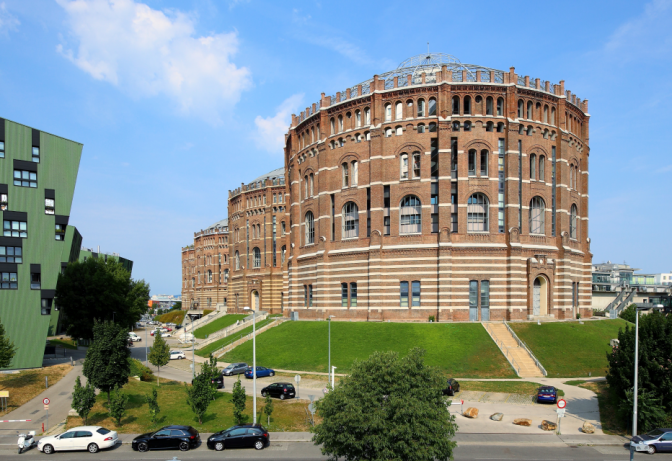
In Ivano-Frankivsk, there’s one more example of how industrial objects open their gates for new functional features. We mean the former plant «Promprylad», being revitalised since 2017. The old industrial buildings have become the platform for concerts and conferences, while the other territories function as galleries, coworkings and catering establishments.
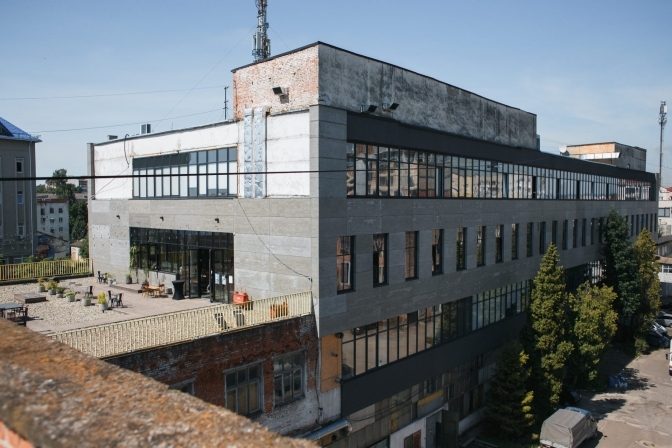
Volodymyr Karaim
Translated by Vitalii Holich
Author’s photos
Full or partial publication of the text without the written consent of the editors is prohibited and is considered copyright infringement.
To receive our weekly email digest of stories, please follow us on Substack.



